Using The Schwazzing Technique To Increase Your Yields
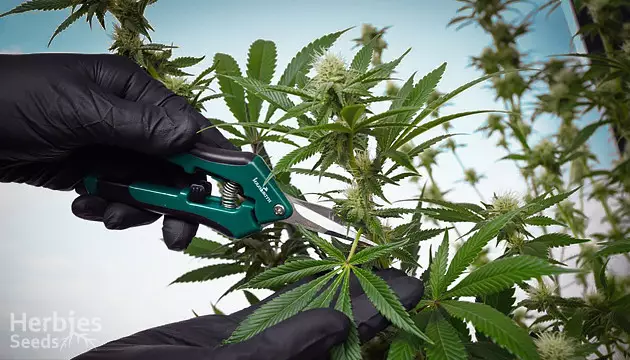
The ultimate goal of any grower is to get the highest yields possible, regardless of whether you’re growing one plant or a hundred. What methods can help you increase your harvest? Well, there are many – you can simply choose high-yielding strains, use fertilizers, or try removing fan leaves during flowering. In this article though, we’re going to talk about schwazzing – the intense defoliation of a cannabis plant twice during its lifecycle. What’s the best part about schwazzing? It’s said to increase your indoor yields up to up to 3lbs (1.3kg) per plant! And that’s not all. Let’s see what other benefits this technique has to offer.
What Exactly Is Schwazzing?
The term schwazzing comes from a book called Three a Light by Joshua Haupt, which offers grow tips “designed for giving monster yields up to 3lbs per light.”
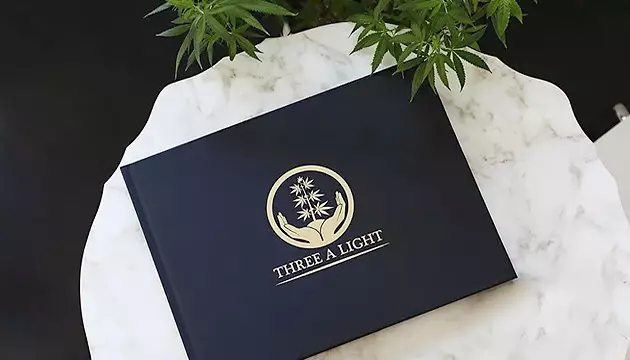
The idea of schwazzing is simple – to remove the plants’ leaves to even out light distribution and induce a level of stress that causes them to increase bud production. It’s an extreme type of defoliation that involves pruning fan leaves during flowering at specific times twice during its lifecycle; once at the very beginning of the flowering stage and again at the start of the third week of flowering.

Haupt compares schwazzing to someone who goes to the gym and trains extremely hard, essentially tearing down and destroying muscle fibers. As the body recovers, muscles are repaired and grow back stronger than they were before.
What Are The Benefits of Schwazzing?
The concept behind schwazzing is similar to other methods of defoliation and comes down to increasing your yield.
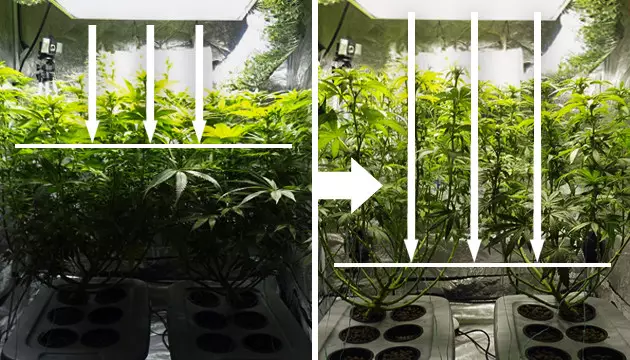
The idea is that removing fan leaves will offer full light penetration to new bud growth by significantly reducing or even completely eliminating shade spots during the flowering period. Doing so redirects all the plant’s energy to budding flowers, leading to bigger, denser buds and huge yields come harvest time.
It’s also said that pruning shade leaves during flowering using the schwazze technique is beneficial for pest control and reducing the chances of mold or powdery mildew.
Learning How To Schwazze
Interested to see if schwazzing could help to increase your overall indoor yield? Of course you are! Who doesn’t want a bountiful cannabis crop come harvest? Check out the following steps to learn how to schwazze for yourself.
Step One: Remove Fan Leaves Before Flowering Begins
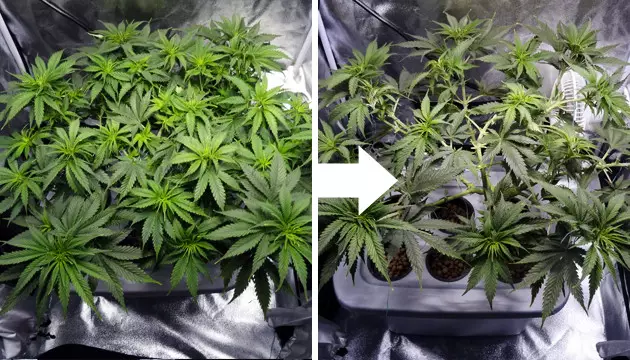
Right before you’re ready to make the switch to a 12/12 light cycle, remove most of the fan leaves from your plants. Removing the biggest fan leaves is especially important, as the idea is to get as much light to bud sites as you possibly can. Once you’re finished removing fan leaves, switch your light cycle to 12 hours on, 12 hours off, which initiates the flowering cycle.
Step Two: Remove Larger Fan Leaves 20 Days Later
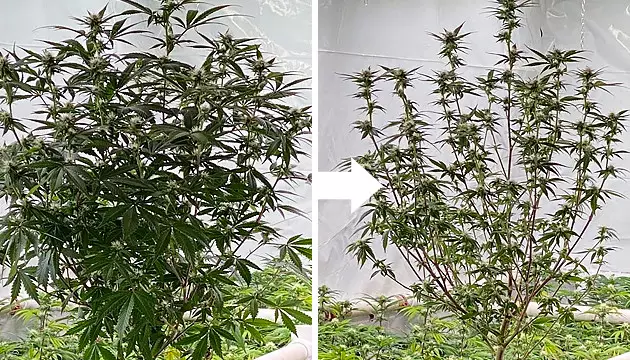
The second step of schwazzing takes place 20 days after the first step is complete. By this time, you’ll notice small buds beginning to form, as well as new fan leaves that have grown back. The idea in this second step of schwazzing is similar to the first – you want to get as much light to newly-blooming buds as possible.
It’s important not to cut all fan leaves during the second step, as during flower, no new leaves will form. While you should cut off most of the fan leaves, it’s necessary to leave some fan leaves, as they’re part of the natural biological function of the plant. In step two, focus on removing the larger fan leaves that block most of the light from budding flowers.
Are There Risks Involved With Schwazzing?
While schwazzing has certainly shown to increase overall yields, there are definitely risks involved. Fan leaves play a key role in the overall health and growth of your plant during all stages of its life.
Leaves are necessary for the intake of carbon dioxide and the release of oxygen, and for the transportation of essential hormones vital for flowering. Nutrients, water and carbohydrates are also stored in the plant’s leaves, making them vital for healthy development. So when it comes to schwazzing, start slow and don’t overdo it.
When trimming shade leaves during flowering is done incorrectly, your plants could experience significant shock and you may even risk losing your entire harvest. Removing fan leaves during flowering should therefore only be done by experienced growers.
Final Thoughts On Removing Fan Leaves With Schwazzing
Removing fan leaves during flowering has serious potential to increase your overall yields. However, while this method of pruning fan leaves during flowering has shown to increase overall yields, it should only be done by those with ample experience cultivating cannabis. So prepare yourself with our tips, perform schwazzing right, and you could see a serious yield come harvest.
Herbies Head Shop expressly refuses to support the use, production, or supply of illegal substances. For more details read our Legal Disclaimer.
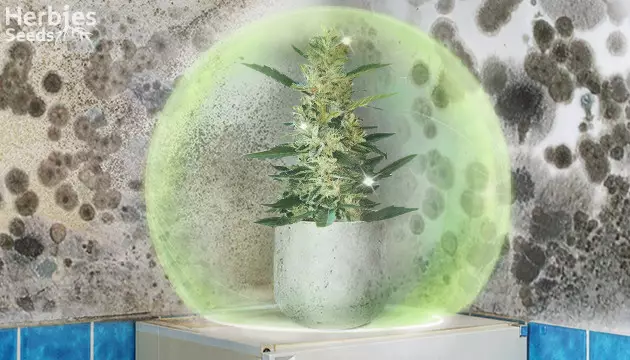
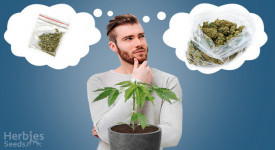
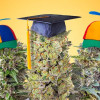



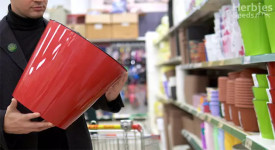
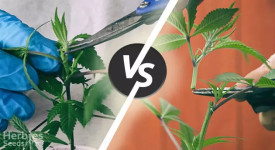
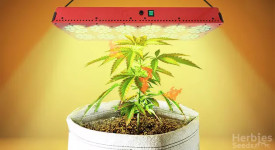
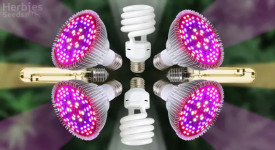
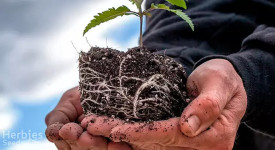
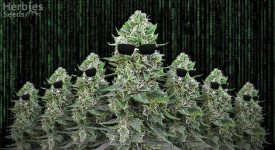
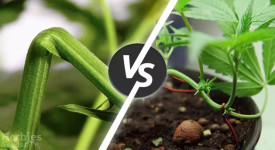

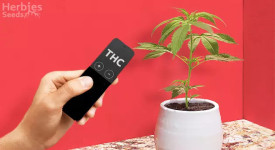

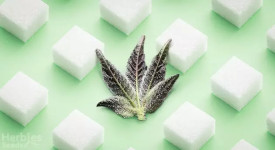
Thank you for leaving a comment for us!
Your feedback will be posted shortly after our moderator checks it.
Please note that we don’t publish reviews that: